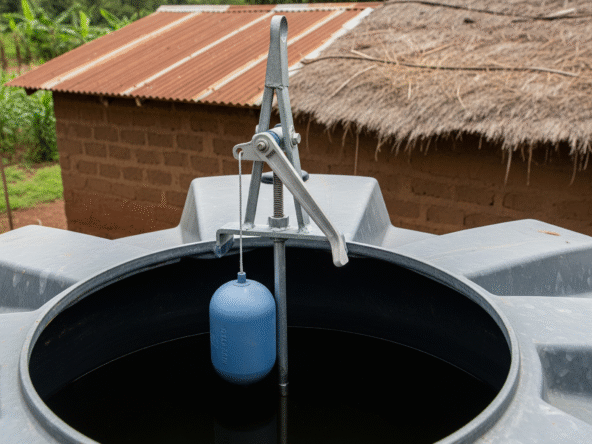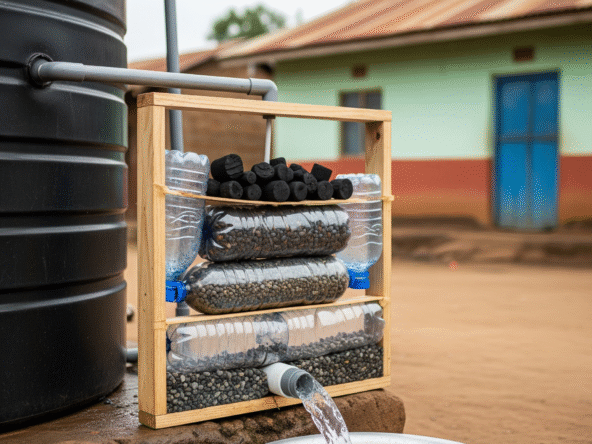In Kenya’s increasingly unpredictable climate, securing a dependable source of clean water is more important than ever. Whether you’re building a new home, running a rental compound, or upgrading your farm infrastructure, a well-chosen water storage tank can make the difference between convenience and crisis.
From rainwater collection to borehole storage and daily use, water tanks have become essential assets in Kenyan households. This guide walks you through the most common water tank options available in Kenya, offering price estimates, use-case recommendations, and expert tips for selection and installation.
Why Every Property Needs a Water Tank
Water supply from public utilities or boreholes is often inconsistent, especially in peri-urban or rural areas. Having a dedicated water storage tank ensures your household or business has a steady reserve for domestic use, irrigation, or emergencies. Tanks also allow you to take full advantage of rainwater harvesting systems, which are becoming popular among budget-conscious homeowners. To learn how to harvest and store rainwater effectively, check out Rainwater Harvesting in Kenya.
Beyond resilience, water tanks also contribute to improved water pressure when combined with gravity-fed stands or pump systems, helping support daily activities like showering, cleaning, and irrigation without disruption.
Types of Water Storage Tanks Available in Kenya
Kenya’s market offers a wide range of water storage tank options tailored to different needs. The most popular among these are plastic water tanks, which offer excellent affordability, portability, and resistance to corrosion. They are widely used in residential compounds and farms. You’ll find these in sizes ranging from 500 litres to over 10,000 litres, making them suitable for both small households and large-scale water needs.
Other tank options include underground concrete tanks, which are ideal for space-limited urban compounds; steel tanks used for commercial or estate-level water backup; IBC tanks that offer safe chemical storage; and GRP tanks, which are often found in multi-storey buildings or institutions due to their fire-resistance and structural strength.
For a guide on which tank brands to trust in the local market, refer to Top Water Tank Brands in Kenya, which compares well-known names like Techno Tank, Kentank, Jojo, and Roto.
Water Tank Prices in Kenya: What to Expect
Prices for water tanks in Kenya vary significantly depending on size, material, and brand. Here’s a quick overview of current price estimates for plastic water tanks the most common household choice:
- 500 litre water tank: KSh 5,000–7,500
- 1,000 litre tank: KSh 8,000–12,000
- 2,000 litre water tank: KSh 13,000–17,000
- 3,000 litre tank: KSh 19,000–24,000
- 5,000 litre tank: KSh 25,000–35,000
- 10,000 litre tank: KSh 50,000–70,000
Keep an eye out for seasonal offers or direct-from-manufacturer sales when shopping for water tanks for sale. These discounts can cut installation costs significantly, especially if you’re also building or fencing your property.
Important Features to Look For
Before purchasing a tank, be sure to assess its durability and compatibility with your intended use. High-quality tanks should be UV-stabilized to withstand Kenya’s harsh sunlight and made of food-grade plastic to keep the stored water clean. Shape and design also matter slim or rectangular water tanks are better for tight urban plots, while round tanks hold larger volumes efficiently.
For improved water flow and pressure, consider mounting your tank on a concrete or steel stand. This not only enhances gravity-based distribution but also protects the tank base from erosion. If you’re paving the compound or building an access way nearby, refer to Compound Paving Alternatives in Kenya to ensure proper drainage around the tank stand.
Installation Tips: Getting It Right the First Time
Proper siting and installation can significantly extend your tank’s lifespan. Always place the tank on a level, well-compacted base—preferably paved or concrete. For underground water tanks, ensure there’s sufficient drainage to prevent flooding or contamination. Overhead tanks should be mounted on secure, rust-resistant stands, preferably 6–10 feet off the ground to optimize pressure.
If your compound includes greywater reuse or vegetable gardening, consider adding a cistern tank or secondary collection system. You can even incorporate sustainability by learning how to integrate composting into your backyard garden a smart way to pair water conservation with waste management.
Choosing the Right Size Tank for Your Needs
Tank size should align with your water demand. Here’s a basic guide:
- For a single household of 3–5 people, a 1,000L to 2,000L tank is usually sufficient.
- For urban rental blocks with 3–4 units, a 3,000L to 5,000L tank offers consistent supply.
- For farms or irrigation systems, go for a 10,000L+ tank.
- In estates with boreholes or large installations, consider tanks ranging from 20,000L and above.
Keep in mind that 500L and 1,000L tanks are ideal for tight spaces or as backup systems, while 5,000L and 10,000L tanks are better suited for compounds that experience regular shortages or host multiple households.
Water tanks in Kenya are no longer optional they’re a core component of every functional home, rental unit, or farm. Whether you’re installing a 500 litre water tank in a small compound or a steel water tank for large-scale storage, understanding your needs, space, and budget will help you make the right decision.
If you’re upgrading your home or compound and want to integrate water storage smartly, explore these related guides:


